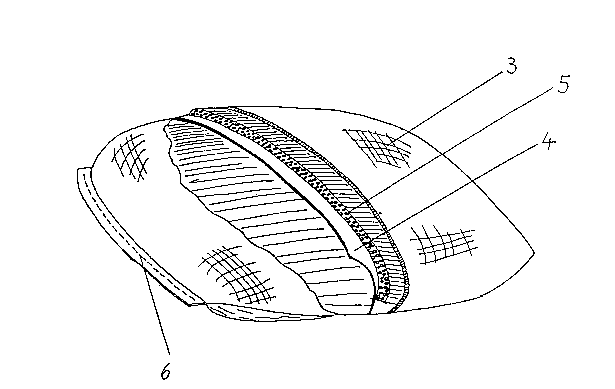Some of the information on this Web page has been provided by external sources. The Government of Canada is not responsible for the accuracy, reliability or currency of the information supplied by external sources. Users wishing to rely upon this information should consult directly with the source of the information. Content provided by external sources is not subject to official languages, privacy and accessibility requirements.
Any discrepancies in the text and image of the Claims and Abstract are due to differing posting times. Text of the Claims and Abstract are posted:
| (12) Patent Application: | (11) CA 2118981 |
|---|---|
| (54) English Title: | FLEXIBLE TANK FOR LIQUIDS |
| (54) French Title: | RESERVOIR SOUPLE POUR LIQUIDES |
| Status: | Deemed Abandoned and Beyond the Period of Reinstatement - Pending Response to Notice of Disregarded Communication |
| (51) International Patent Classification (IPC): |
|
|---|---|
| (72) Inventors : |
|
| (73) Owners : |
|
| (71) Applicants : |
|
| (74) Agent: | BORDEN LADNER GERVAIS LLP |
| (74) Associate agent: | |
| (45) Issued: | |
| (22) Filed Date: | 1994-03-14 |
| (41) Open to Public Inspection: | 1994-09-16 |
| Examination requested: | 1998-03-26 |
| Availability of licence: | N/A |
| Dedicated to the Public: | N/A |
| (25) Language of filing: | English |
| Patent Cooperation Treaty (PCT): | No |
|---|
| (30) Application Priority Data: | ||||||
|---|---|---|---|---|---|---|
|
ABSTRACT
A flexible tank for liquids includes a wall having at least two layers each formed
of a tubular segment free of longitudinal seams. The ends of the tubular segments are
sealed with a transverse seam. A first of the layers which forms a liner of the tank is in
contact with the liquid to be stored and is made of a thin, flexible foil. The liner is
surrounded by a supporting layer which is made of tear-resistant material. The preferred
liner is made of a tubular polyethylene foil sealed at both ends by hot welding and the
preferred supporting layer material is a tubular polypropylene fabric which has no
longitudinal seams. The tank can hold large amounts of liquid at a relatively low
weight, can be easily transported and can be used in wilderness areas in camps for water
or fuel storage.
Note: Claims are shown in the official language in which they were submitted.
Note: Descriptions are shown in the official language in which they were submitted.

2024-08-01:As part of the Next Generation Patents (NGP) transition, the Canadian Patents Database (CPD) now contains a more detailed Event History, which replicates the Event Log of our new back-office solution.
Please note that "Inactive:" events refers to events no longer in use in our new back-office solution.
For a clearer understanding of the status of the application/patent presented on this page, the site Disclaimer , as well as the definitions for Patent , Event History , Maintenance Fee and Payment History should be consulted.
| Description | Date |
|---|---|
| Inactive: IPC from MCD | 2006-03-11 |
| Application Not Reinstated by Deadline | 2003-03-14 |
| Time Limit for Reversal Expired | 2003-03-14 |
| Inactive: Abandoned - No reply to s.30(2) Rules requisition | 2002-08-14 |
| Deemed Abandoned - Failure to Respond to Maintenance Fee Notice | 2002-03-14 |
| Inactive: S.30(2) Rules - Examiner requisition | 2002-02-14 |
| Letter Sent | 1998-04-29 |
| Inactive: Status info is complete as of Log entry date | 1998-04-28 |
| Inactive: Application prosecuted on TS as of Log entry date | 1998-04-28 |
| Request for Examination Requirements Determined Compliant | 1998-03-26 |
| All Requirements for Examination Determined Compliant | 1998-03-26 |
| Application Published (Open to Public Inspection) | 1994-09-16 |
| Abandonment Date | Reason | Reinstatement Date |
|---|---|---|
| 2002-03-14 |
The last payment was received on 2001-02-16
Note : If the full payment has not been received on or before the date indicated, a further fee may be required which may be one of the following
Please refer to the CIPO Patent Fees web page to see all current fee amounts.
| Fee Type | Anniversary Year | Due Date | Paid Date |
|---|---|---|---|
| MF (application, 4th anniv.) - small | 04 | 1998-03-16 | 1998-03-09 |
| Request for examination - small | 1998-03-26 | ||
| MF (application, 5th anniv.) - small | 05 | 1999-03-15 | 1999-01-29 |
| MF (application, 6th anniv.) - small | 06 | 2000-03-14 | 2000-02-23 |
| MF (application, 7th anniv.) - small | 07 | 2001-03-14 | 2001-02-16 |
Note: Records showing the ownership history in alphabetical order.
| Current Owners on Record |
|---|
| JORGE LOPEZ BLUMENKRON |
| Past Owners on Record |
|---|
| None |